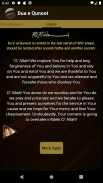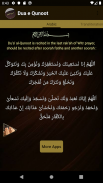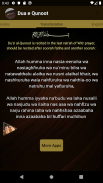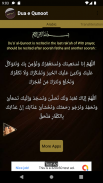








Dua e Qunoot

Description of Dua e Qunoot
Du’a’ al-Qunoot is recited in the last rak’ah of Witr prayer, after bowing, but if one recites it before bowing it doesn’t matter. But reciting it after bowing is better.
Shaykh al-Islam [Ibn Taymiyah] said in Majmoo’ al-Fataawa (23/100):
With regard to qunoot: there are two extreme views and one middle (or moderate) view. Some say that qunoot should only be recited before bowing and some say that it should only be recited after bowing. The fuqaha’ among the scholars of hadeeth, such as Ahmad and others, say that both are allowed, because both are mentioned in the saheeh Sunnah, but they preferred reciting qunoot after bowing because this is mentioned more often.
Raising the hands is mentioned in a saheeh report from ‘Umar (may Allaah be pleased with him), as was narrated by al-Bayhaqi in a report which he classed as saheeh (2/210).
The worshipper should raise his hands to chest height and no more, because this du’aa’ is not a du’aa’ of supplication in which a person needs to raise his hands high. Rather it is a du’aa’ of hope in which a person holds out his palms towards heaven… The apparent meaning of the scholar’s words is that the worshipper should hold his hands close together like a beggar who asks someone else to give him something.
It is better not to recite qunoot in witr all the time, rather it should be done sometimes, because there is no evidence that the Messenger of Allaah (peace and blessings of Allaah be upon him) did it all the time. But he taught al-Hasan ibn ‘Ali (may Allaah be pleased with him) a du’aa’ to recite in qunoot al-witr, as will be quoted below.






















